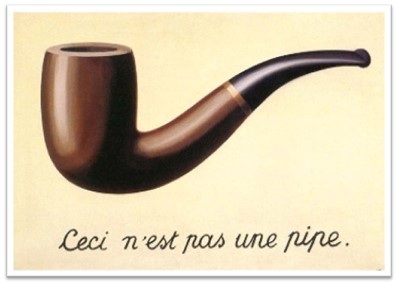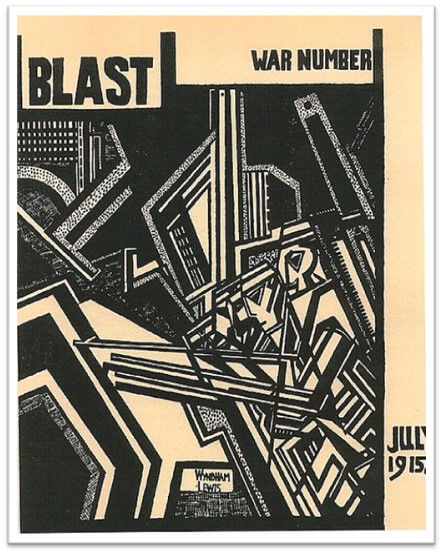12 Aspects of Modernism
Aspects of Modernism
For much of the twentieth century, the word Modernism referred to the work of a small cluster of writers and artists from the first half of thed twentieth century who were known for creating experimental, difficult work. In the last few decades, the category of Modernism has expanded to incorporate the African American vernacular realism of Zora Neale Hurston, the slapstick films of Charlie Chaplin, the first Krazy Kat and Superman comics, photojournalistic accounts of the Great Depression, the cosmic horror of H. P. Lovecraft, and more. Even so, the term does not simply refer to works created between the 1910s and the 1950s. (You can spell Modernism with either a lower-case or upper-case m; we’ve chosen to capitalize it for consistency’s sake.)
Modernism is best understood as a set of ideas about the world and the role of art within it. Since Modernism is a multi-genre, transnational phenomenon, we will illustrate two of these key ideas with examples from the visual arts. You will not be expected to identify any visual art works on the exam.
Challenging Representationalism

Surrealist painter René Magritte’s The Treachery of Images is one of the most famous artefacts of Modernism. Its caption reads, “This is not a pipe.” What is it, then? It’s a painting of a pipe.
Let’s take a step back. Realism begins with the assumption that language (or, say, paint on a canvas) is a representation of the real world. When we read In the Cage, we take it for granted that “hams, cheese, dried fish, soap, varnish, paraffin” are just some of the items for sale at Cocker’s grocery, that there are customers who buy those items, that Captain Everard served in the British Army or the Royal Navy, and so on. When we read “The Yellow Wall-paper,” we identified the name “Weir Mitchell” with Gilman’s actual doctor. At an even more basic level, in order to talk about the people in a story, we have to forget that they are made of characters (a, b, c…). Some Modernists asked: What if we didn’t forget? They drew attention to the materiality of language and sound through puns, wordplay, and unconventional uses of typography. The poetry of Apollinaire (see Electronic Poetry Center, excerpt from Calligrammes) and E. E. Cummings (see Poetry Foundation, entry for “E. E. Cummings”) are famous examples.
Modernism was not unique in its questioning of representation and meaning (as you will know if you’ve read Laurence Sterne’s Tristram Shandy [1759–1767] or Samuel Taylor Coleridge’s Rime of the Ancient Mariner [1817]), but these concerns came to the fore in the twentieth century. Why? One possibility is that the influx of new communication technologies (including the typewriter, telegraph, radio, gramophone, and motion picture) prompted users to think about how information is transmitted and stored, and the relation between “signal” and “noise.” For Modernists who had grown up hearing more than one language or dialect, textual experimentation could be way of expressing cultural hybridity, or showing the gaps in understanding between local cultures and an increasingly homogeneous mass culture.
Fiction writers also experimented with plot and characterization, finding themselves frustrated with the artifice of Realism. What could be less realistic than the Aristotelian plot structure, with its sequential chain of events and tidy resolution at the end? One formal innovation to emerge from this questioning was the genre of the short story cycle, which we will examine in the topics on Sherwood Anderson and Ernest Hemingway.
We have discussed psychological realism in our unit on Henry James. Many Modernist writers took psychological realism’s inward turn even further, attempting to convey the obscure logic of memory, or, alternatively, displaying skepticism about humans’ ability to ever understand one another. Some Modernists embraced the idea that one has to go beneath surface realism to access a deeper emotional or spiritual realism. This premise is central to Expressionism, which we will discuss when we read Sherwood Anderson’s short stories. Finally, Modernism brought with it a return to symbolic and allegorical modes, which Realism generally shunned. But unlike the allegorists of earlier periods, Modernist writers often foregrounded the difficulty of arriving at a stable meaning.
War, Violence, and the Extreme
Virtually no Modernist writer was untouched by the great losses of the early twentieth century. World War I put a damper on the Victorian era’s optimism about what seemed like boundless technological progress. Death itself became “modern.” Killing was made efficient and impersonal through the invention of mustard gas, fighter planes, tanks, flame throwers, and portable machine guns. Unlike earlier conflicts (including the Civil War), World War I was widely perceived as a war without moral justification. Those who volunteered for the service in hopes of glory quickly found their ideals dashed.
Ernest Hemingway served as a Red Cross ambulance driver in World War I. He assisted wounded soldiers, recovered the bodies of the dead, and sustained serious injuries on the front line. In A Farewell to Arms (1929), a novel inspired by his experience in the war, Hemingway wrote, “Abstract words such as glory, honor, courage, or hallow were obscene beside the concrete names of villages, the numbers of roads, the names of rivers, the numbers of regiments and dates.”
The war played a part in the turn away from traditional modes of representation we described above. On one hand, it brought an unbearable literality to the fact of death (as in Hemingway’s litany above); on the other, the trauma of war wreaked havoc on veterans’ ability to form a coherent narrative. Sigmund Freud famously treated shell-shocked soldiers who were unable to describe what they had seen or done, but who found themselves unconsciously re-enacting battle scenes in their dreams or in their day-to-day lives. The psychoanalytic treatment of trauma, in turn, was adopted as a narrative model by some writers of fiction.
The war was not the only event uprooting Americans from their sense of normal life. The influenza pandemic of 1918 (the so-called “Spanish flu”) infected more than 500 million people (almost a third of the world’s population) and killed at least 50 million. More Americans died from the flu pandemic than in all the wars of the twentieth century combined (Outka). The mortality rate was particularly high among young adults: a “Lost Generation,” indeed. Industrialization had improved the quality of life for many, but it was killing others. 25,000 Americans died in industrial accidents in 1913 alone (Puskar). Car ownership had leapt from 200,000 in 1909 to 2.25 million in 1916, but there were no traffic lights, lane markings, turn signals, driver’s licenses, or laws against drunk driving (“1900–1930”). Unlike war deaths, deaths from flu and accidents were commonly regarded as private losses: the bad luck of an individual, not the crisis of a nation.

Does this mean Modernism was a literature of despair? Not at all. Some artists embraced an aesthetic of violence and called for the destruction of all things traditional. Famous examples of this strain of Modernism include Italian artist F. T. Marinetti’s “Initial Manifesto of Futurism” (1909) and the literary journal BLAST. Other Modernists, however, turned the accelerating pace and ever-present dangers of urban life into comedy, as in Charlie Chaplin’s 1936 film Modern Times (see Charlie Chaplin Swallowed by a Factory Machine). Others still used their work as a means of recovering the richness of everyday life in spite of loss and uncertainty. This latter tendency, with which Stein is often associated, has been described as “ordinary” or “pragmatic” Modernism (Olson, Modernism and the Ordinary; Schoenbach).
Do not expect to find all of these characteristics in every work you read in this unit. Also, as you may have already noticed, none of the characteristics of Modernism are unique to Modernism. In fact, that’s just what Hemingway was saying when he rejected the “lost generation” label: that what seemed new was in large part a recirculation and amplification of what had come before.

